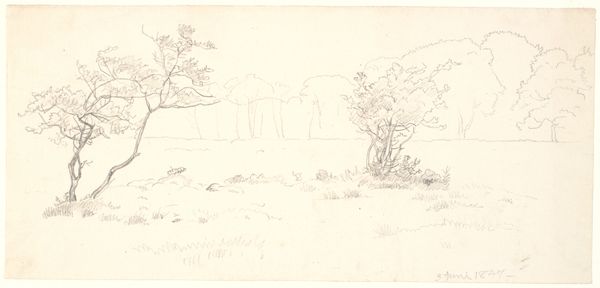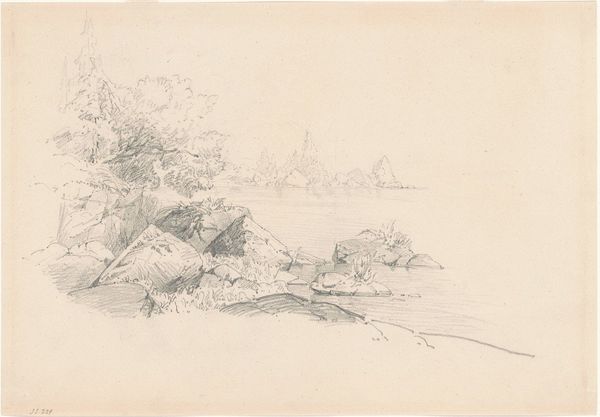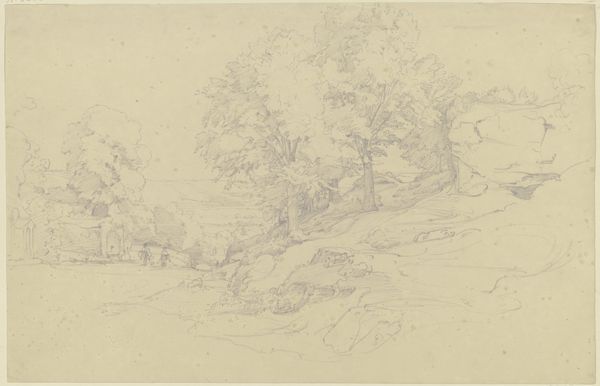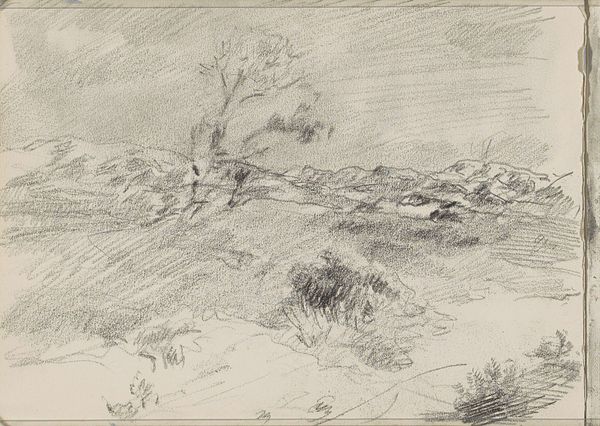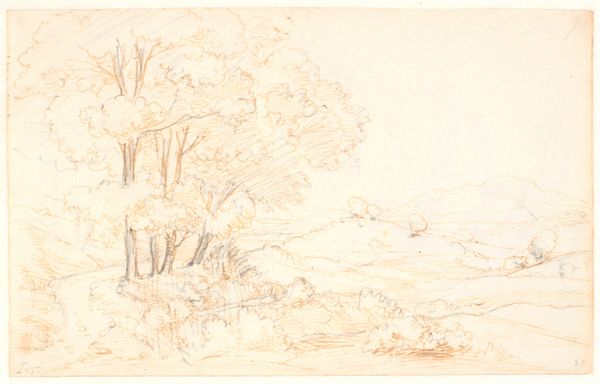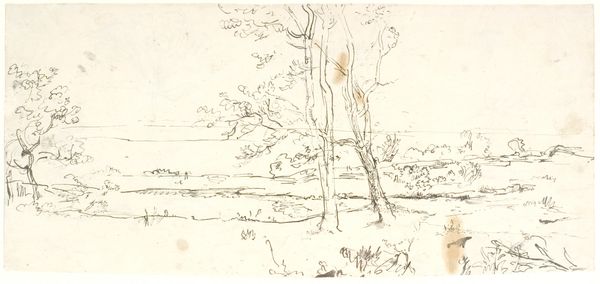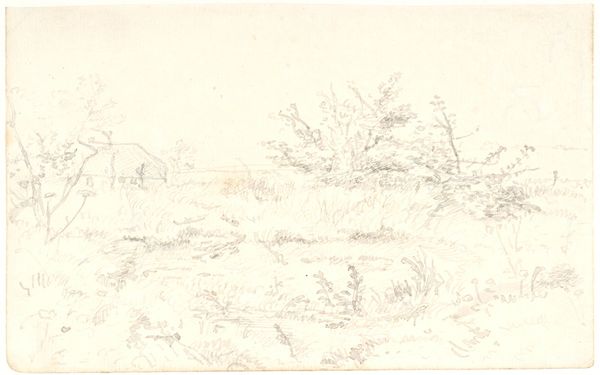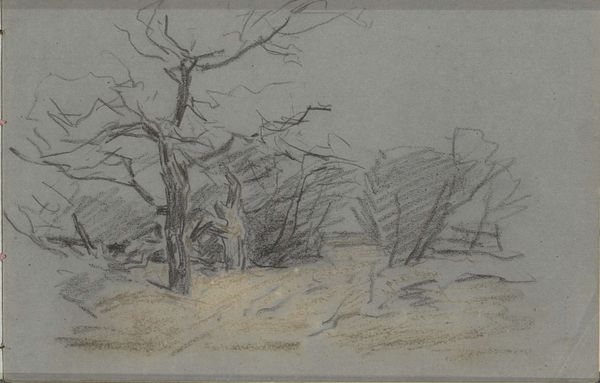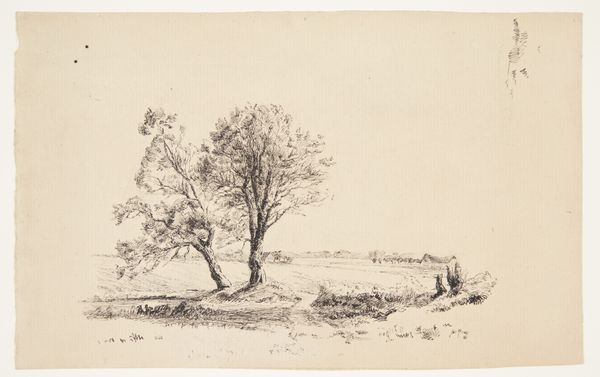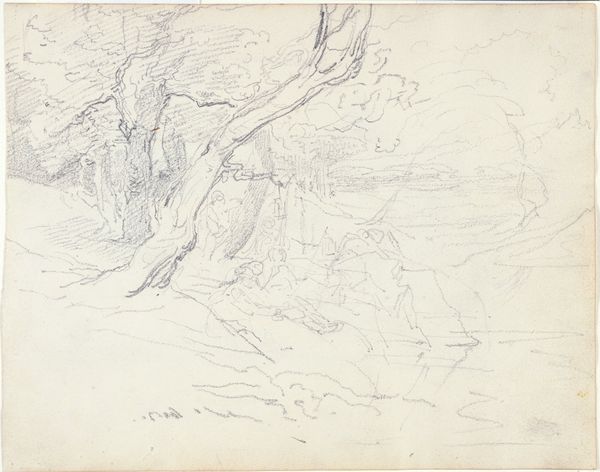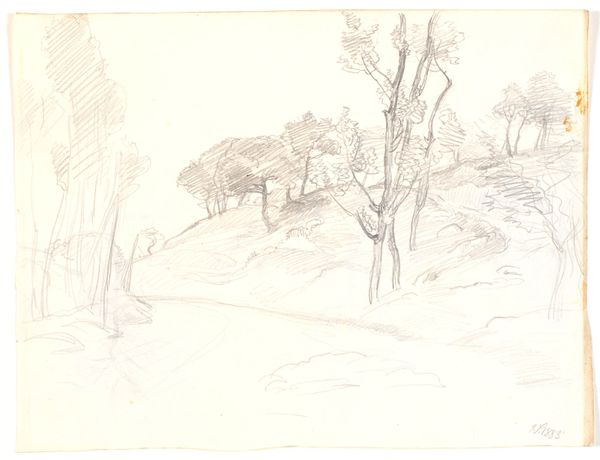
drawing, ink, pencil
#
drawing
#
landscape
#
ink
#
romanticism
#
pencil
Dimensions: 204 mm (height) x 305 mm (width) (bladmaal)
Editor: So, this is *Træstudier*, or “Tree Studies,” created by Dankvart Dreyer in the 1840s. It's an ink and pencil drawing. It feels… almost hesitant, like a memory fading at the edges. What stands out to you in this piece? Curator: For me, this drawing offers a fascinating glimpse into the development of landscape art as it grapples with emerging national identities. Dreyer, working in the Romantic period, uses this study of trees to subtly question our relationship to the land itself. The detailed rendering contrasts starkly with the blurred horizon. How does this juxtaposition speak to you? Editor: It makes me wonder if the specificity of "place" really mattered to him or if these are studies *of* trees that stand in *for* other themes. What would those themes be? Curator: I believe it speaks to a yearning for a stable national identity rooted in a specific relationship with the Danish landscape. Remember, the 1840s were a time of immense nationalistic fervor. By depicting the details of these specific trees – their unique forms and textures – Dreyer could be suggesting a deep, almost spiritual, connection to the land itself, using art as a subtle instrument of nation building. Consider this drawing in light of the history of land ownership and the rural populations dependent on the land. Editor: So, in focusing on something as seemingly apolitical as trees, Dreyer was making a statement about belonging and national identity? Curator: Precisely. He might even be engaging with debates around land rights and access that directly affected marginalized communities. These “Tree Studies” are much more than just aesthetic observations; they’re quiet interventions in the political landscape of the time. I hadn't really considered the implications of national identity being shaped by landscape like this before. Thank you. Editor: This has opened up so much for me. I'm now thinking about the role of nature and identity in modern art!
Comments
No comments
Be the first to comment and join the conversation on the ultimate creative platform.
